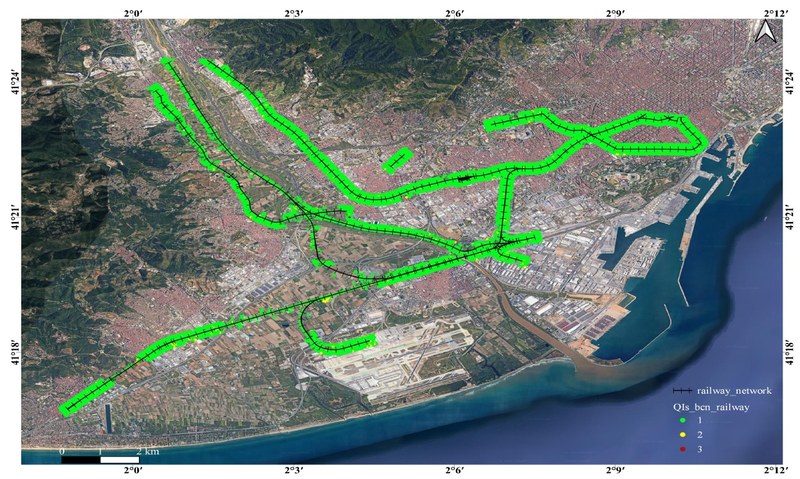New indicators of interferometric SAR data quality
Jul 24, 2023
Yismaw Abera Wassie defended his thesis co-supervised by Michele Crosetto and Oriol Monserrat (CTTC) on July 24, 2023 at the Baix Llobregat Campus. The thesis, entitled "Spatio-temporal quality metrics for Satellite SAR Interferometric data", presents quality indicators for interferometric SAR (Synthetic Aperture Radar) data
The availability of RADAR images for monitoring Earth’s surface and its changes over time prompt the development of several interferometric SAR (InSAR) algorithms and methodologies. The Multi-temporal InSAR (MT-InSAR) techniques, generally, aim at extracting the temporal evolution of displacements of targets with coherent scattering behavior from a stack of SAR acquisitions that are taken from the same area and processed relative to temporal and spatial references. On the other hand, due to the complex nature of SAR measurements, addressing all possible model parameters in a comprehensive manner is still challenging and is a source of error and misinterpretation. As a well-established spaceborne geodetic technique with various applications, the accuracy of MT-InSAR products does matter, and hence potential error sources must be mitigated. The accuracy of displacement time-series (TS) estimates, in many cases, is governed by the quality and number of exploited images, associated interferograms, and selected measurement points. Such data and derived results are heavily influenced by factors, including environmental conditions at times of measurement acquisition and the processing algorithms used. Incomplete representations of factors in modeling MT-InSAR measurements may, as well, lead to omission errors and hence an incorrect estimation and interpretation of the displacement TS. Any uncertainty in the accuracy of the MT-InSAR products compromises their reliability in sensitive applications. In line with this, tools to detect, identify, and classify interferometric measurements that are particularly impacted by phase unwrapping (PhU) errors had been developed with the aim to identify and mitigate potential errors in the data— ultimately improving the quality and valuing the worth of MT-InSAR measurements. These tools make use of estimated phase residuals derived from a redundant network of unwrapped interferograms to formulate threshold-based quality scores as indicators of the reliability of the measurement points, images in a TS, images, and interferograms. Multiple pairs of baseline-constrained Sentinel-1 SAR images were considered to assess the potential of the tools to automatically detect, identify, and mitigate errors in the framework of the PSIG processing chain. The techniques were applied pixel by pixel in space and time to associate reliability scores highlighting the influence of global and local PhU errors in the course of the phase estimation. Experiments had generally justified that error mitigation strategies which include the exclusion of less reliable measurements from the network had relieved the impacts of errors and improved the TS estimation. Another important aspect of the thesis is the use of the point score tool as a post-PhU pixel filtering technique. The methodology contributes by providing quantitative information on the percentage of reliable pixels immediately after the PhU step. The experiments in this regard justified that the tool adds extra dimensions to common pixel selection techniques and is responsible for mitigating limitations on PhU error correction methodologies. Using it in conjunction with existing point selection techniques further guaranteed the inclusion of reliable points in the process. The results demonstrated that the proposed techniques significantly improved the quality of InSAR data. Besides, implications for various applications that rely on MT-InSAR datasets— such as those used in monitoring mining areas and infrastructures and those ground deformations induced either by natural or anthropogenic phenomena, have been justified. Potential avenues for future research to further improve the qualities of interferometric products including the quantification of interferometric measurement point location uncertainties are also envisioned.

Share: